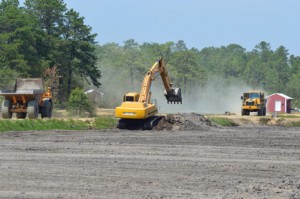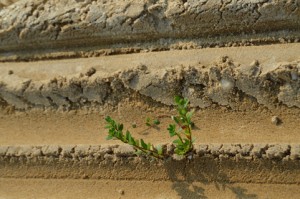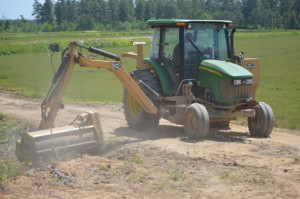This week, some of our team members sat down for the inaugural session of “Lunch and Learn”, the idea of team member Matt Stiles. Matt came to us in October (“a challenging time to start at a cranberry farm,” says COO Bryan vonHahmann) and has been doing a little bit of everything ever since. But one of the places he’s been the busiest has been with new production.
“Setting up this meeting was all Matt’s idea,” says Bryan. “When he came to me with it, I thought about it for a bit and really liked the idea. So I told him to go ahead and facilitate it. He organized the whole thing: the venue, the attendance, the time…lunch was a great idea because it keeps things casual and it’s a chance for everyone to sit down at the same time.” The first topic was weeds and erosion because, as Matt says, “they were something I’d been paying a lot of attention to while working with the new beds; with all the new production I thought it’d be a good idea if we stayed on top of it.”
Tuesday, Matt sat down with Bryan, CEO Bill Haines, Mike Haines, Steve Manning, Jeremy Fenstermaker, Matt Giberson, and Tim Bourgeois for an informal lunch meeting to discuss issues with weed control and erosion as well as brainstorming ideas for prevention and repair. “I wanted to have these meetings to discuss issues and solutions,” he says. “To talk about weeds in the new bogs and what we can do to prevent them, because it can get expensive to fix later on. So I figured we’d start with weeds, have a discussion, come up with some solutions to prevent them from establishing.” Some solutions have already been working. “Putting in clean sand will help a lot, though we have to be careful if we start to stockpile it.” Matt also found an article from Massachusetts about putting grass or a cover crop on dams to prevent weeds from getting into bogs. “We’d have to stay on top of mowing, but it might save extra work down the line. With new bogs we need to be vigilant with prevention after root establishment. If we see weeds, we need to hand pull them as best we can.” The team also discussed erosion, which can take a lot of time to fix and can cause us to lose plants. “If it takes three or four years to establish vines, over time we’re going to have a lot of acres to be repaired, which can take time and get expensive, so we need to do what we can to prevent it.” Our bog reno team already has some solutions in place for this as well.
The team ultimately decided to test a couple of things on a smaller scale, with the hope of expanding the methods to a larger area if all goes well. Both Matt and Bryan were pleased with the outcome. “I think we came up with some really good ideas to make things better,” Matt says. Bryan agrees, and is also looking forward to other topics to be discussed at future meetings: “The guys came up with a lot of good stuff to work on: applications, debris reduction, harvest technique. And it’s great that Matt came up with this; he’s got great experience and capability, and I’m excited to see where we go with this in the future.”



